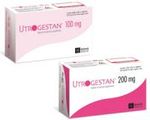Not every woman is lucky enough to become pregnant in a few months, with fertility playing an important role in both men and women. Reduced fertility is not only be detected from a failure to get pregnant, as menstruation troubles for example can also be an indication. Uncovering the causes of reduced fertility usually requires the help of a specialist doctor.

Fertility
Treatments
How does Dokteronline work?
At Dokteronline, you can get expert advice from doctors quickly, without the hassle of visiting your GP’s surgery. Take care of your health with reliable treatments and information from the comfort of your home.
Select your preferred treatment
The doctor will review your medical request
The pharmacy will ensure your medication is delivered to your doorstep
IVF
A typical example of IVF is as follows:
Step 1
Repression of the natural hormonal cycle
Step 2
Stimulation of egg production
Step 3
Monitoring the progress
Step 4
Collection of the eggs
Step 5
Insemination of the eggs
Step 6
Re-implantation of the embryo
Medication
You will find an overview of the most commonly used medication for reduced fertility below.
Human choriongonadotrofine (HCG)
HCG is a hormone produced by the body that in women, stimulates ovulation and the ovaries to produce the sex hormone oestrogen, while in men, it stimulates the production of testosterone needed for the formation of new semen. Examples of HCG are Pregnyl, Ovitrelle, Profasi and Novarel.
GnRH-analogen
GnRH-analogen (hypothalamus hormones) inhibit the production of female hormones which enables greater ovulation control. GnRH-analogues exist in two types: agonists and antagonists. The difference between the two is that antagonists can prevent early ovulation in a more direct way. GnRH-agonists include Suprecur (busereline), Prostap (leuproreline), Synarel (nafareline) and Decapeptyl (triptoreline). Examples of GnRH-antagonists are Cetrotide (cetrorelix), Ganirelix, Orgalutran (ganirelix) and Antagon.
Clomiphene
Clomiphene stimulates the release of hormones that control the maturation of the eggs and ovulation in women. The Clomid drug is an example of clomifen.
Ethinylestradiol
Ethinylestradiol has the same action as the female sex hormone oestradiol and makes the mucosa of the cervix more accessible to sperm cells.
Gonadotrophins (FSH and LH)
Gonadotrophins (FSH and LH) play an essential part in the natural cycle. FSH (follicle stimulating hormone) ensures that the follicles (egg vesicles) grow and start producing the female hormone oestrogen. LH (luteinising hormone) stimulates the actual maturation of the egg cell and starts the ovulation process. Examples of gonadotrophins are Gonal-F, Menopur, Merional, Fostimon, Puregon, Bravelle, Follistim, Pergonal and Repronex.
Doxycycline
Doxycyclines are antibiotics in pill format and are used by the man during the IVF cycle of the woman to decrease the quantities of bacteria in the sperm which can jeopardise the performance and quality of the sperm during an IVF cycle.
Progesterone preparations
Progesterone increases the chance of pregnancy after re-implanting the embryos in IVF treatments. Examples of progesterone preparations are Gestone (progesterone), Cyclogest (progesterone), Crinone (progesterone 8% vaginal gel) and Utrogestan (progesterone).
